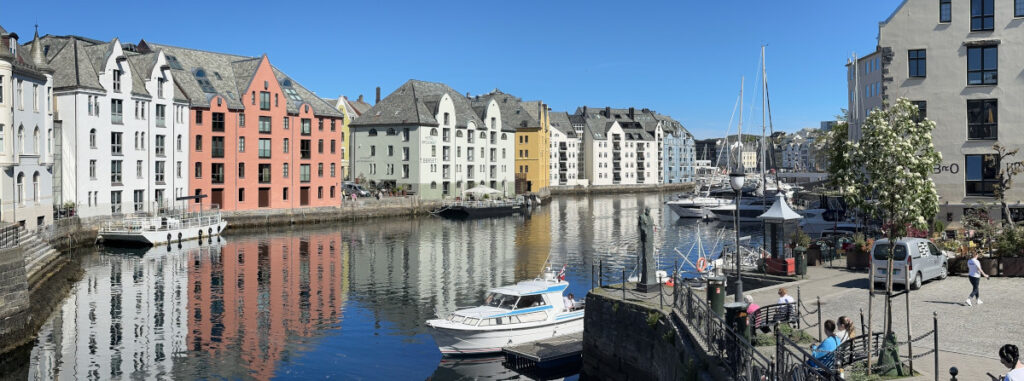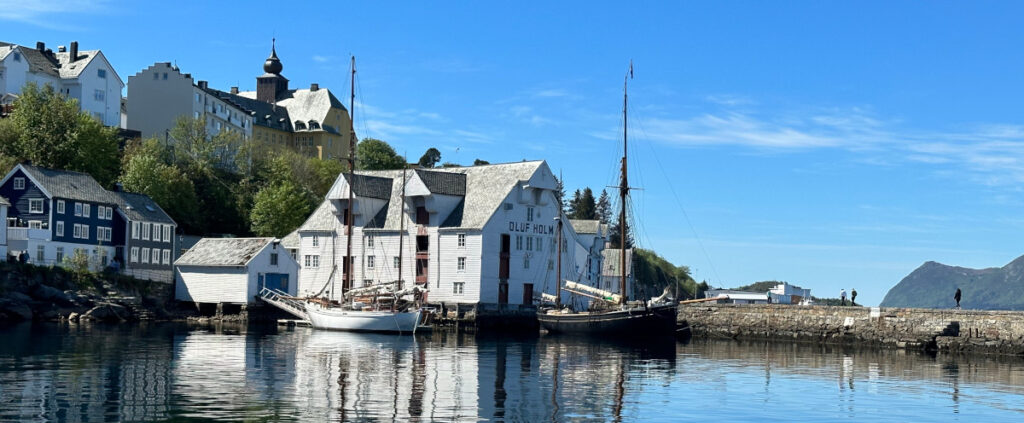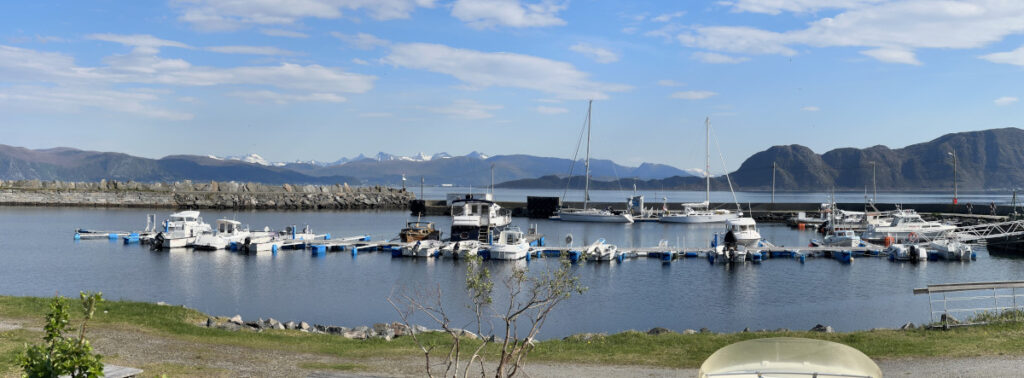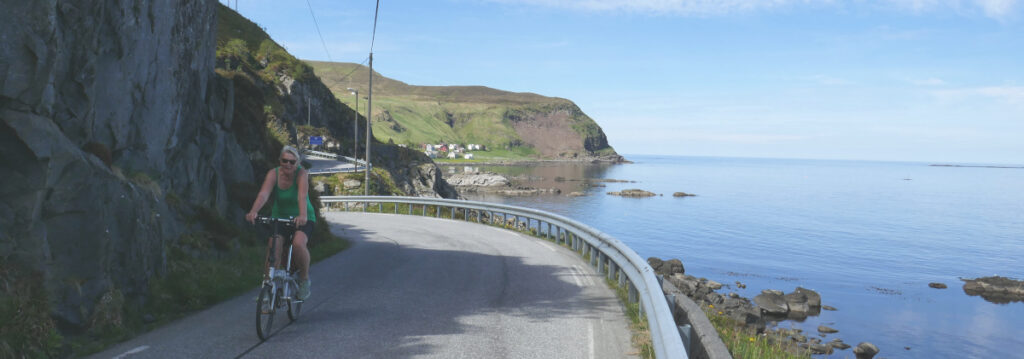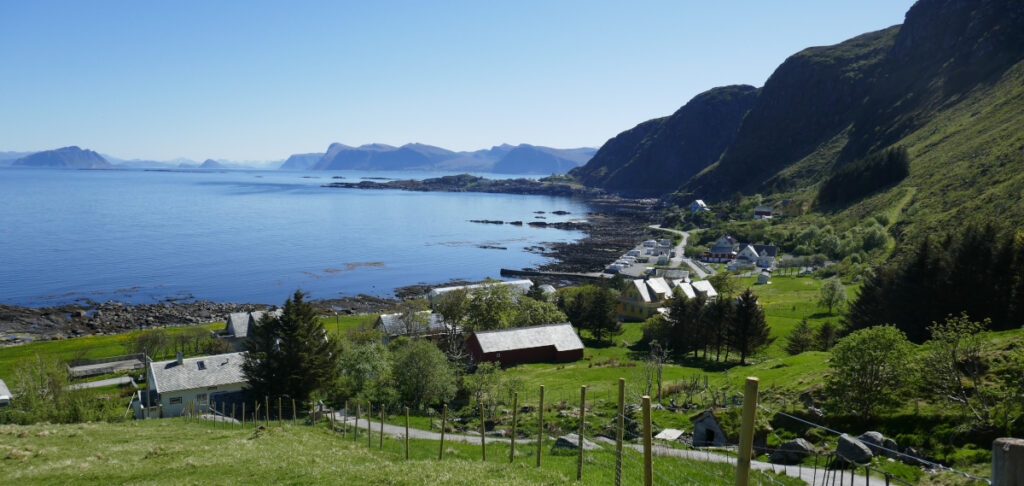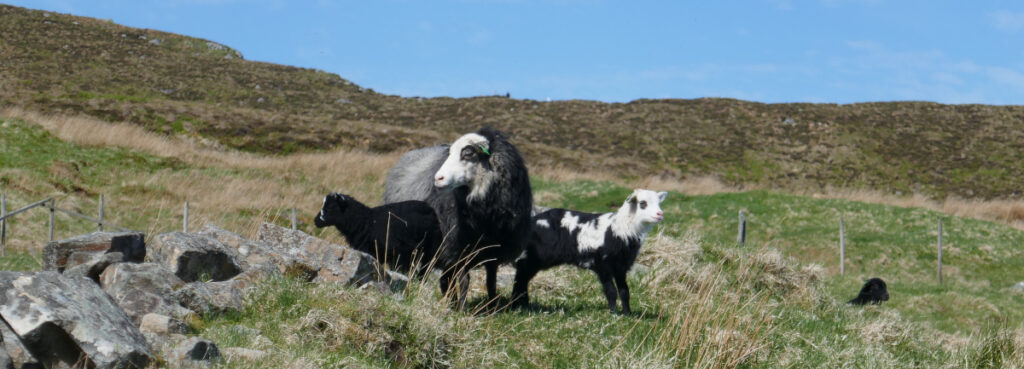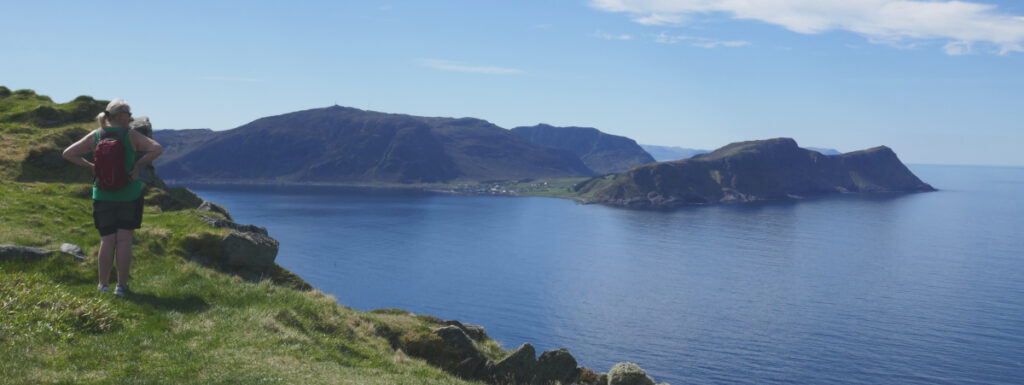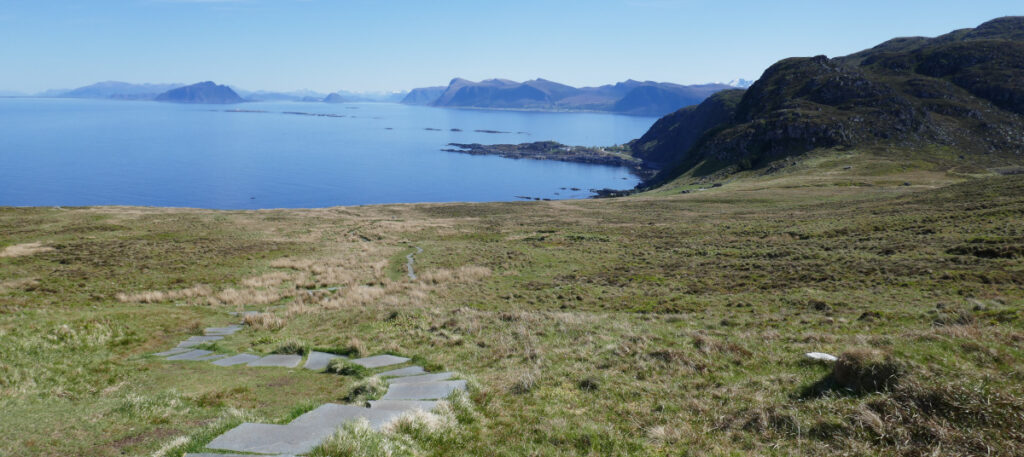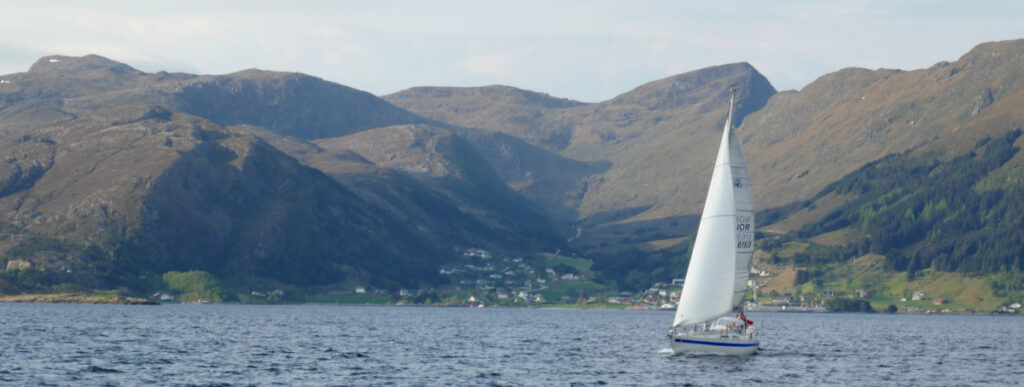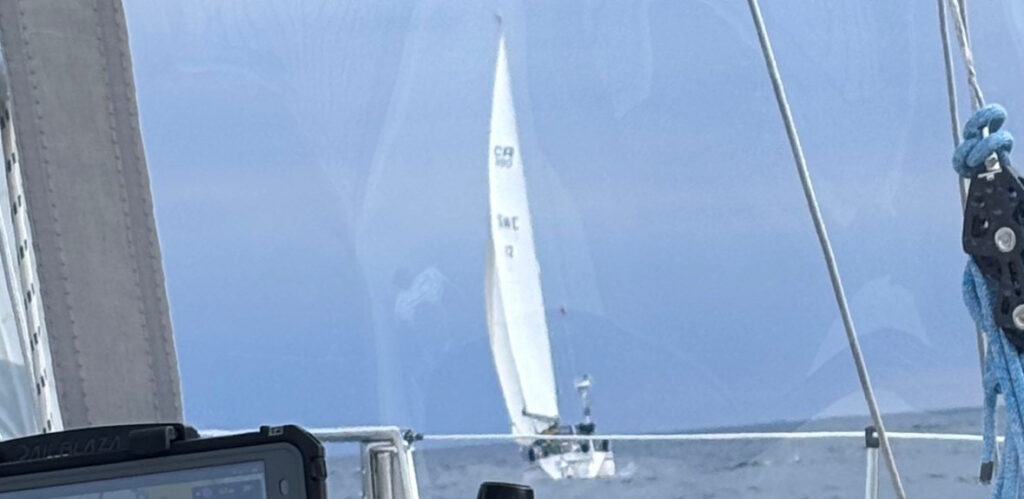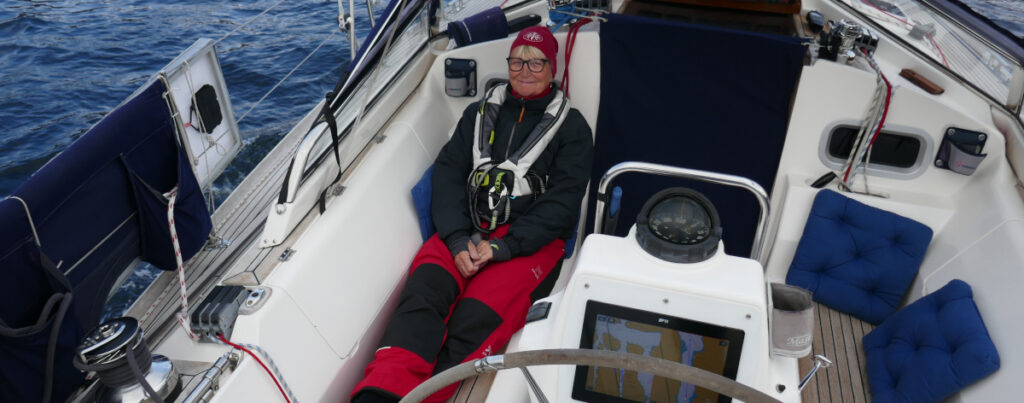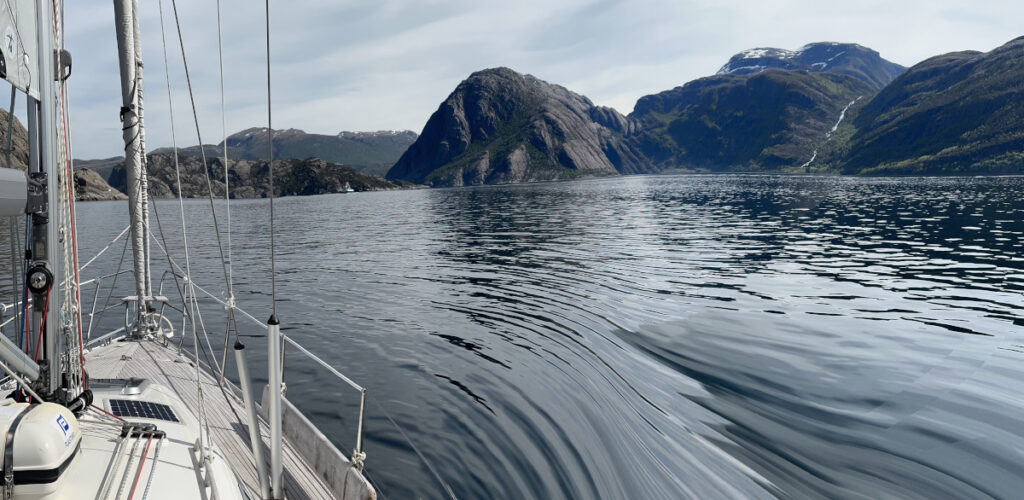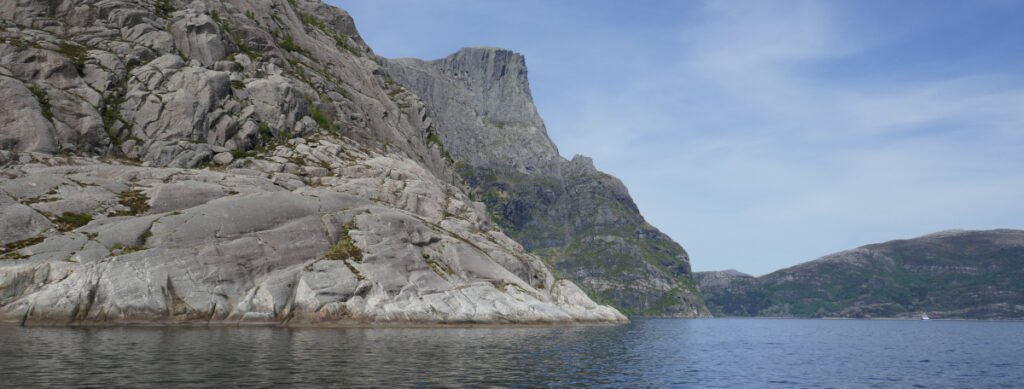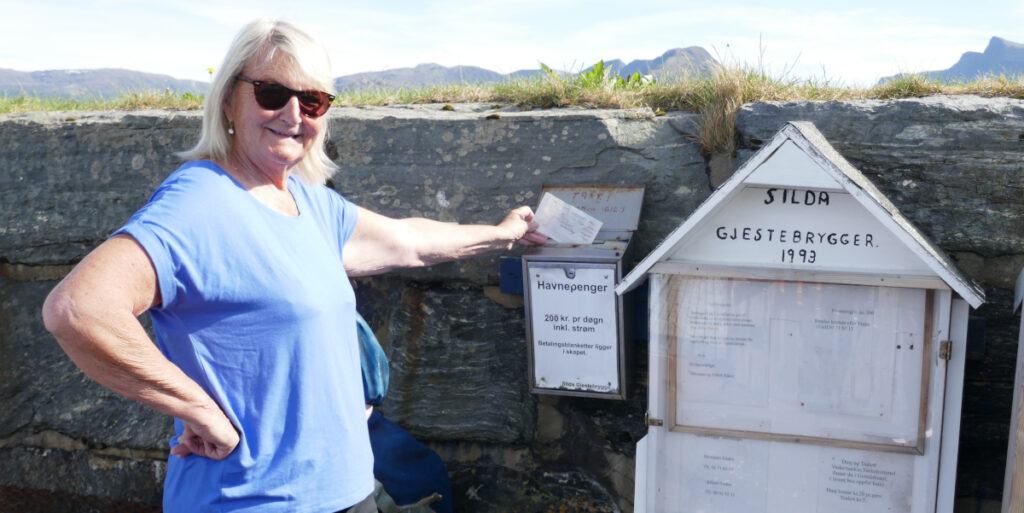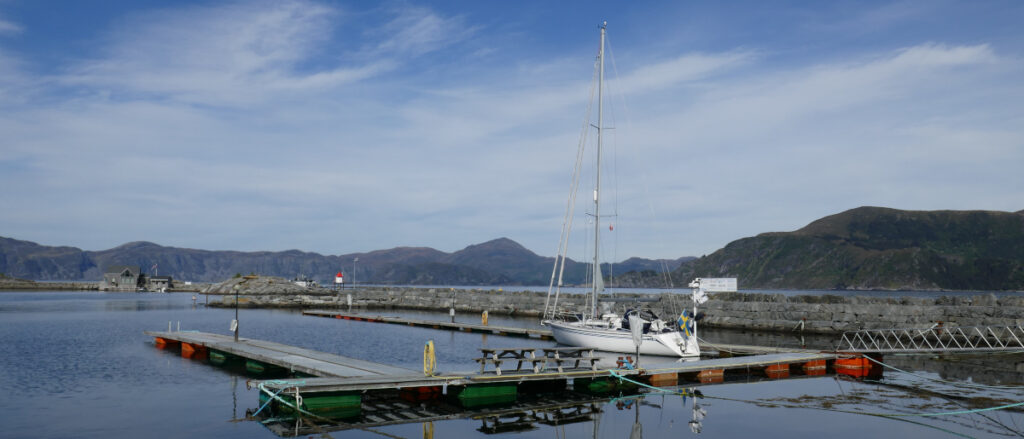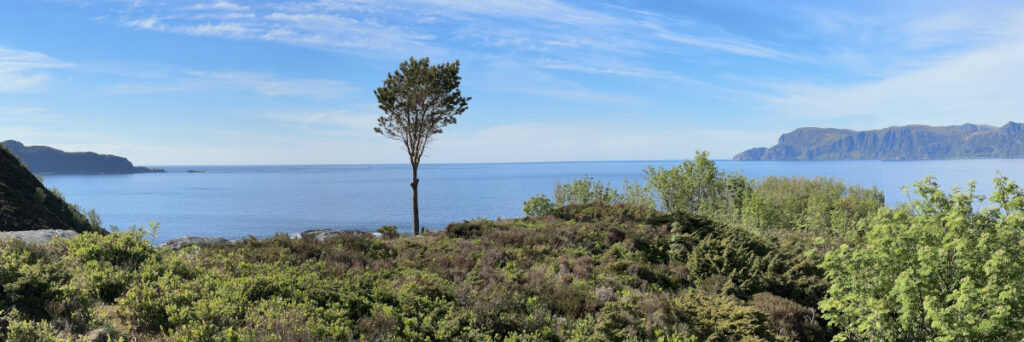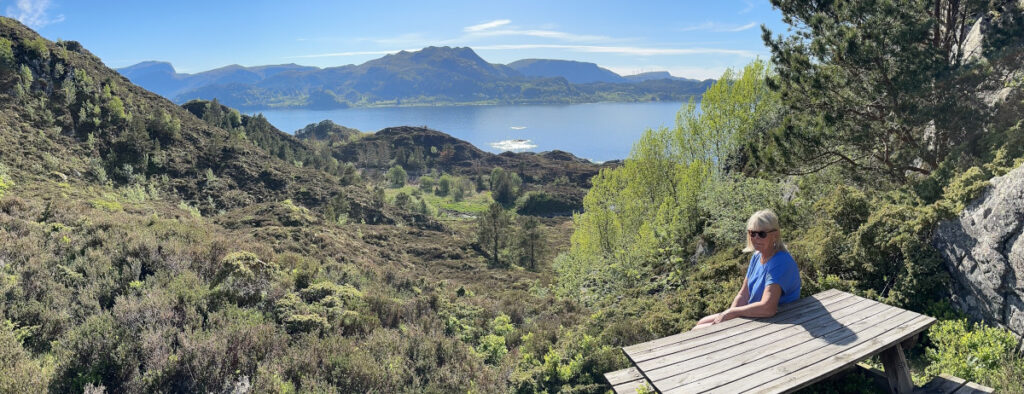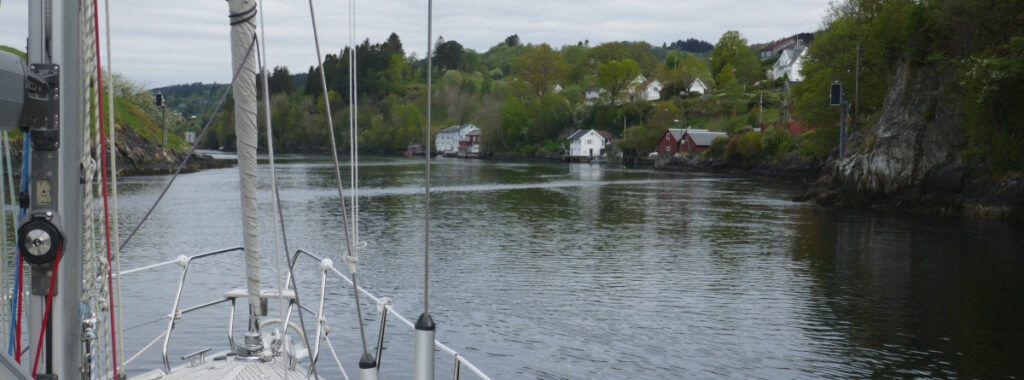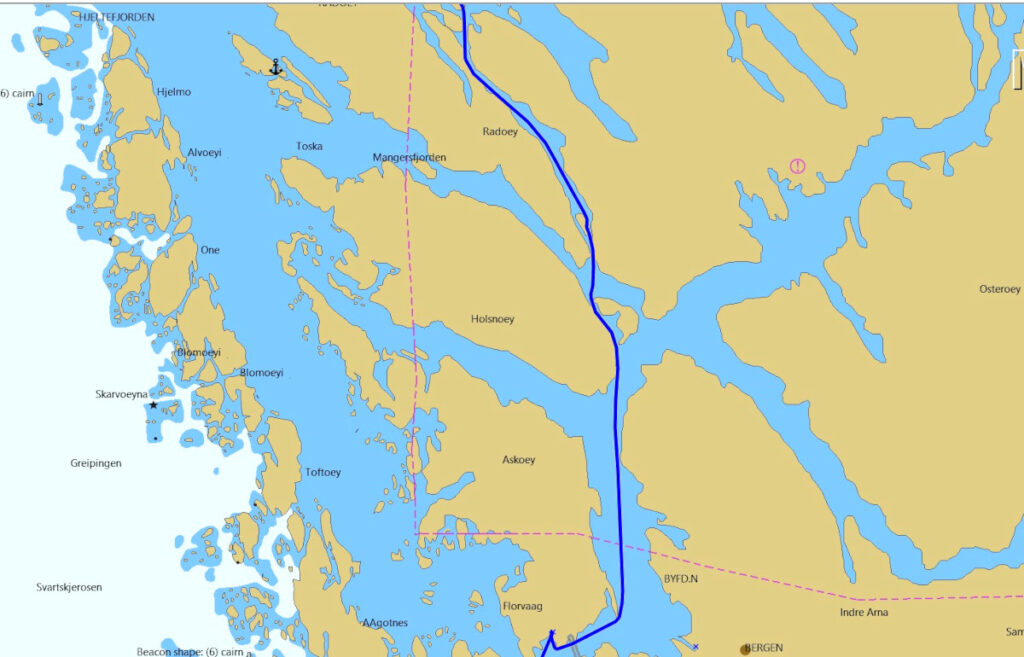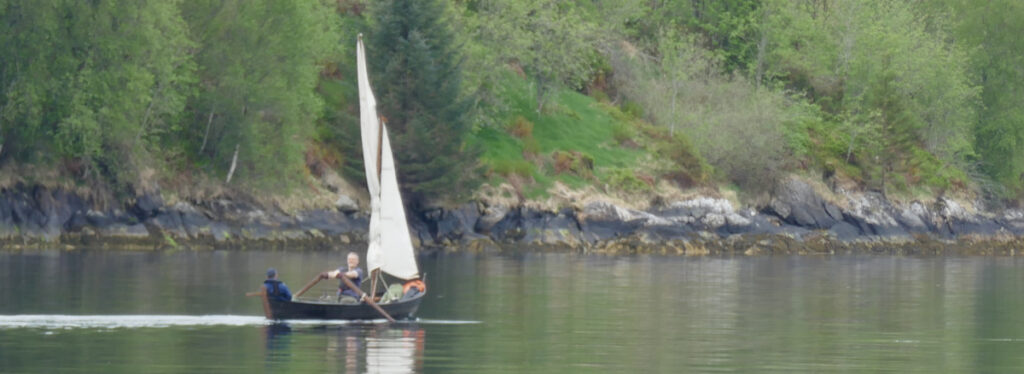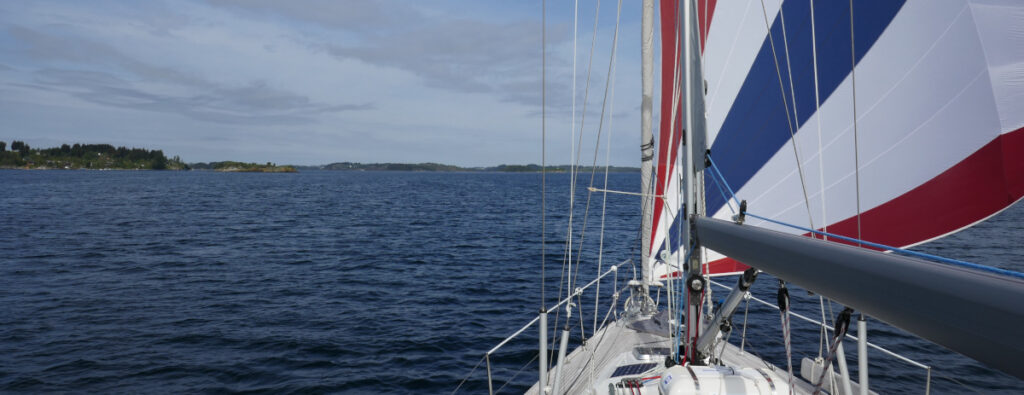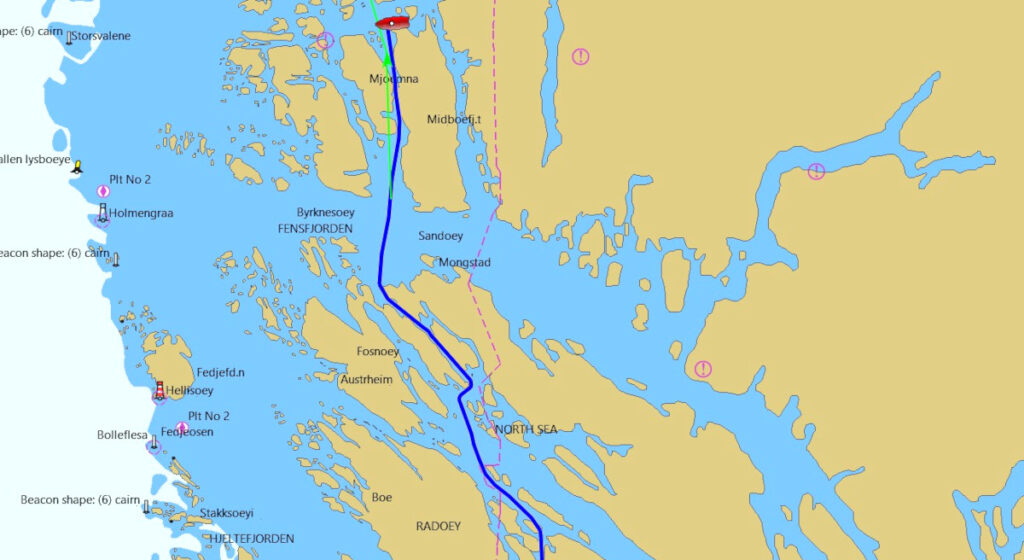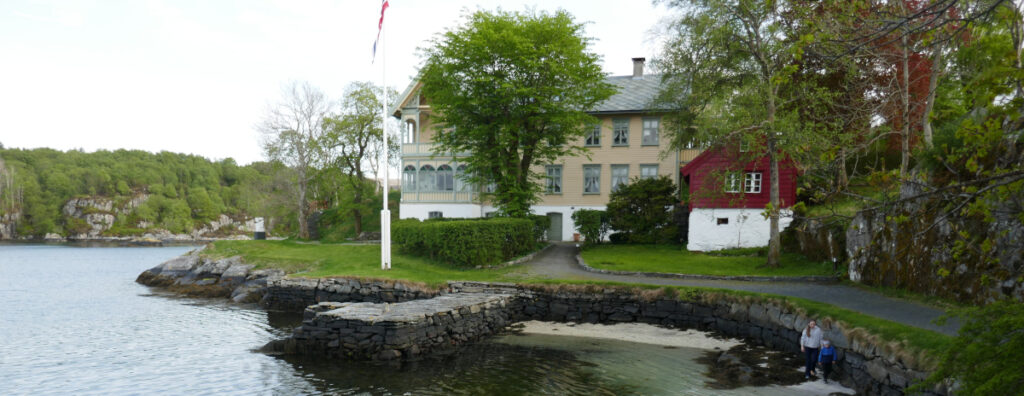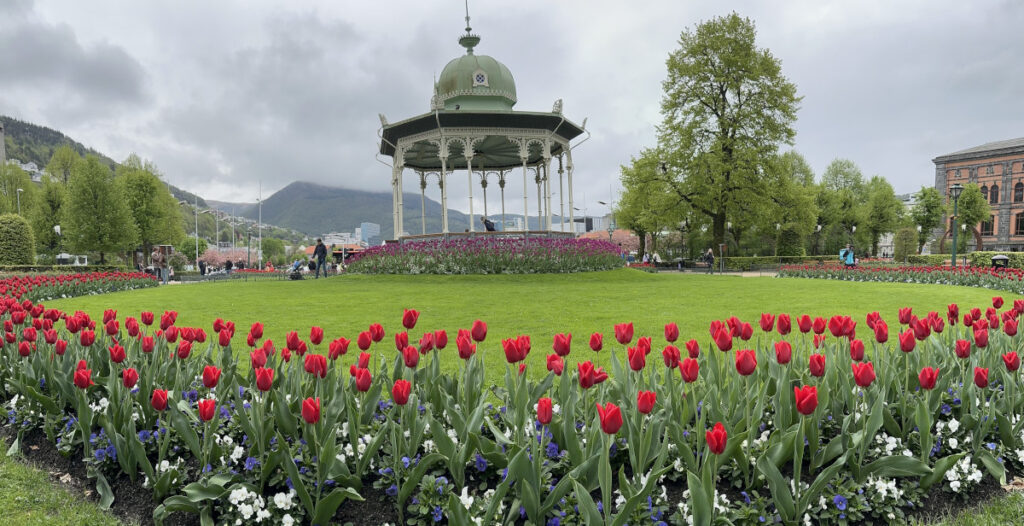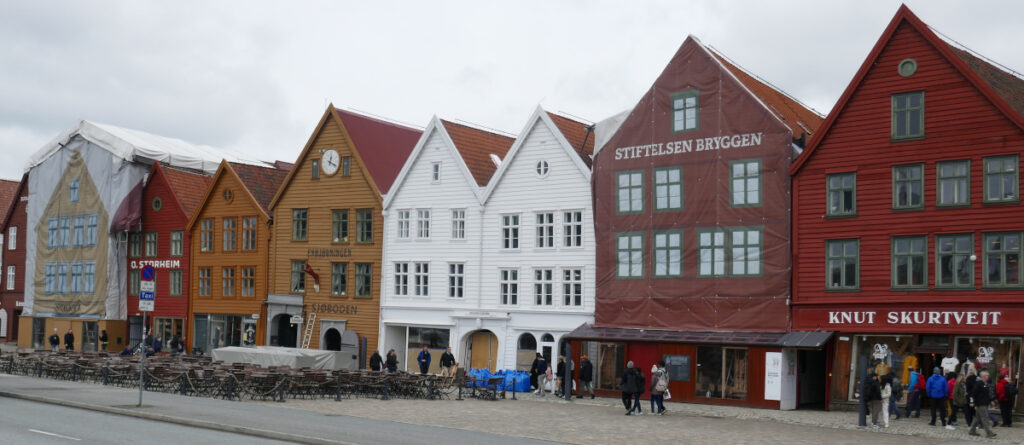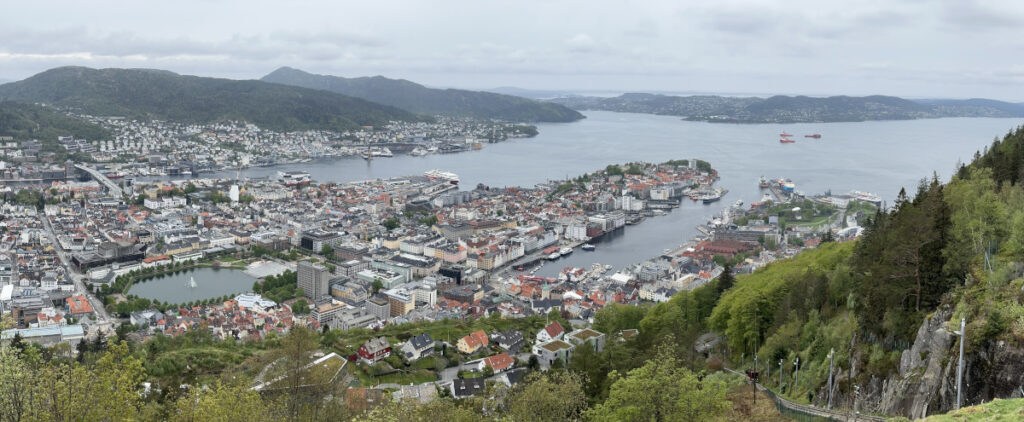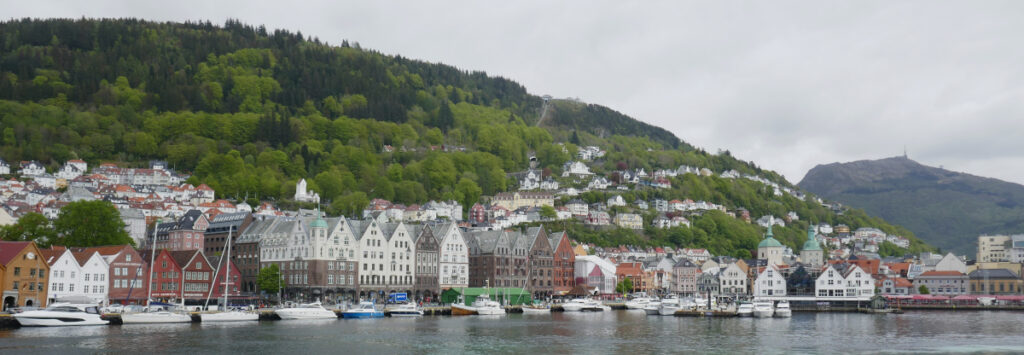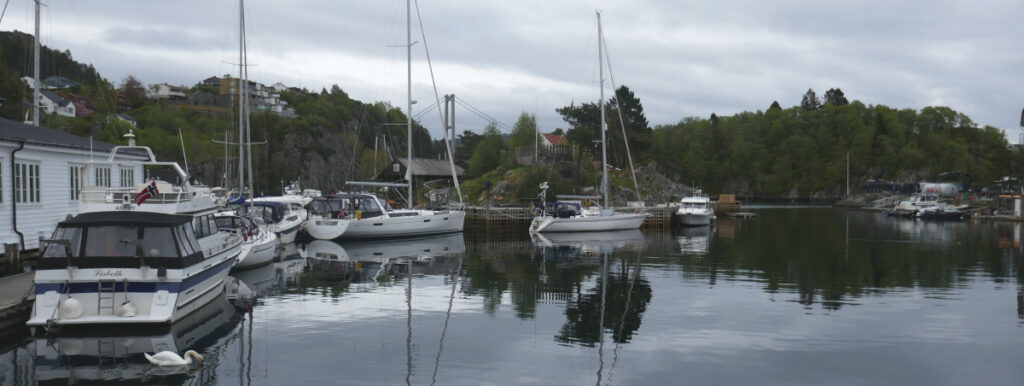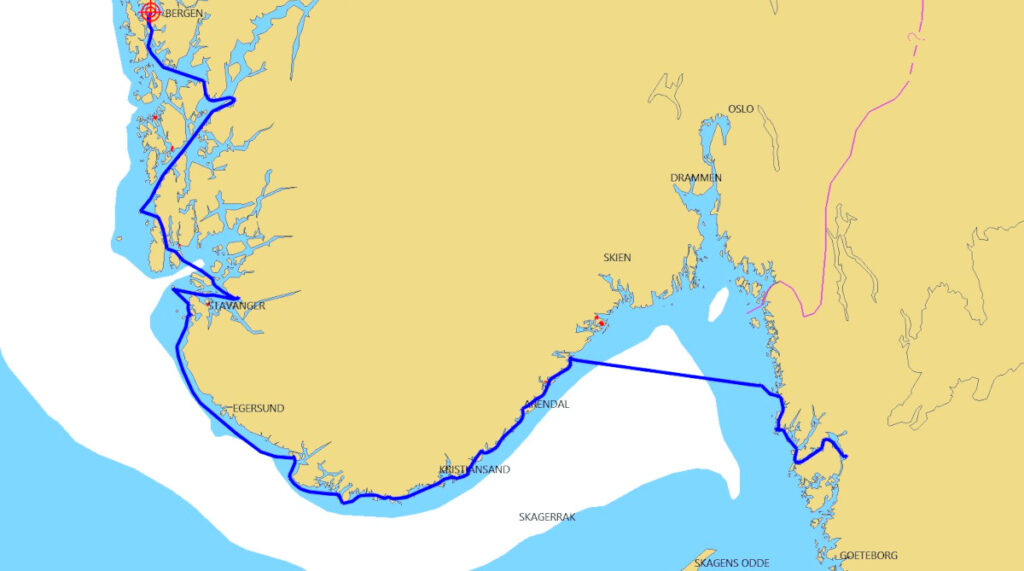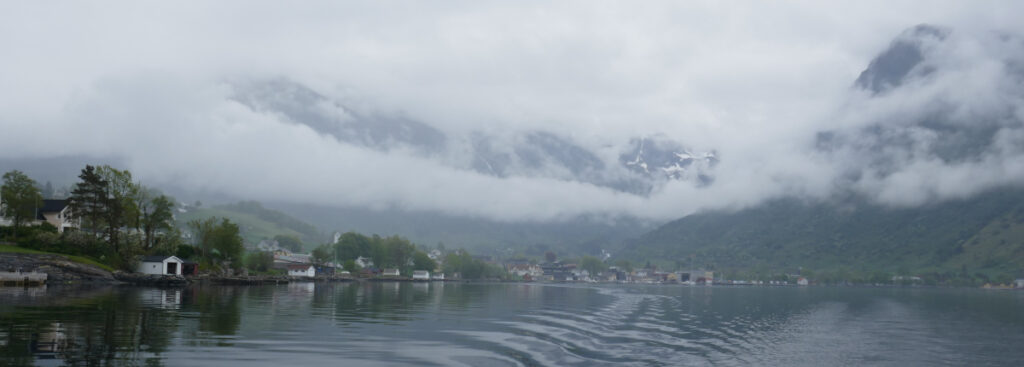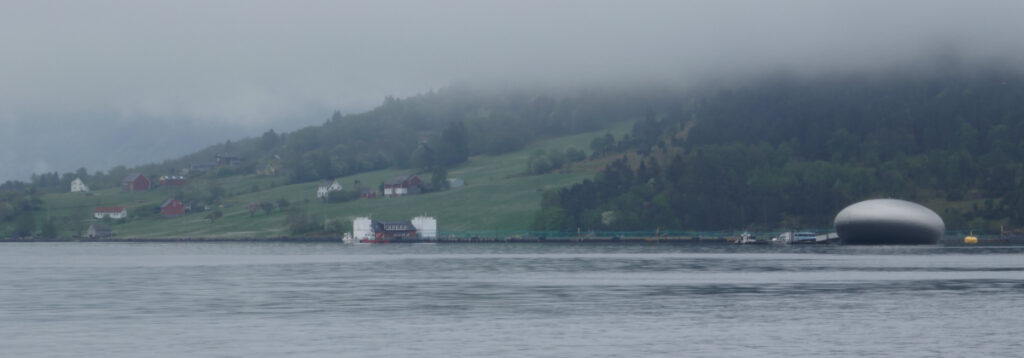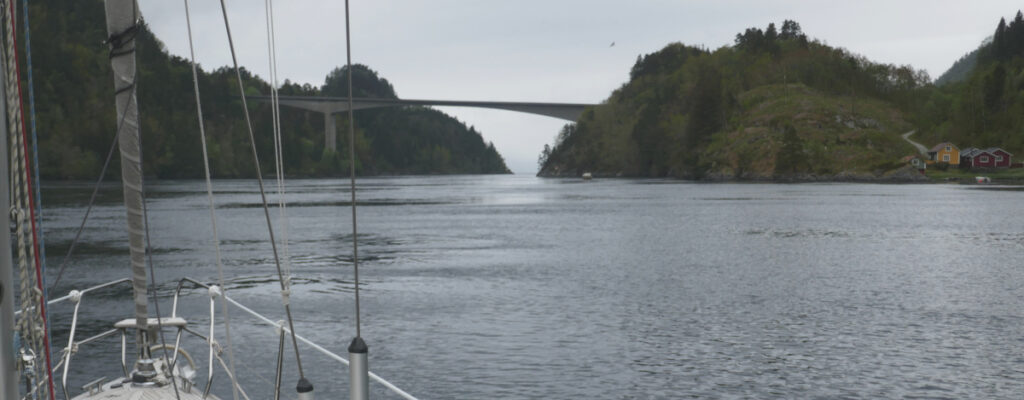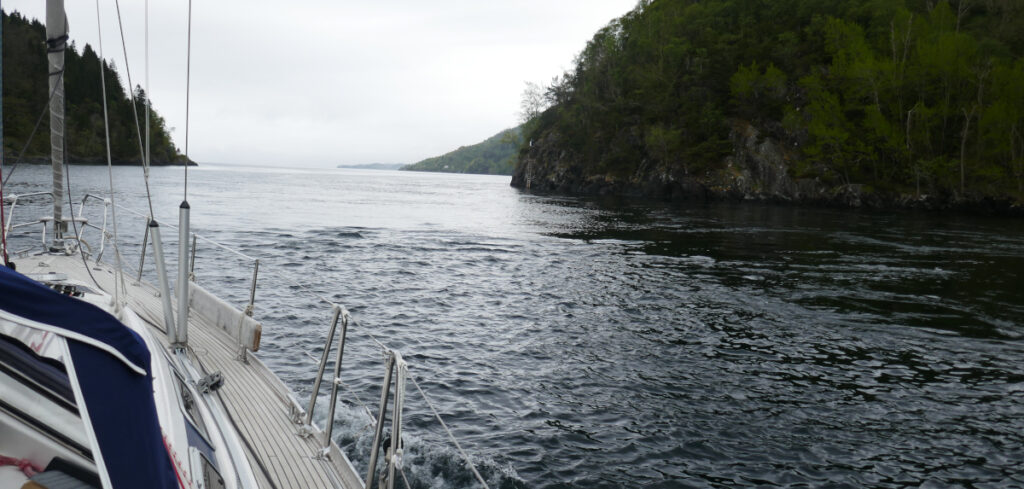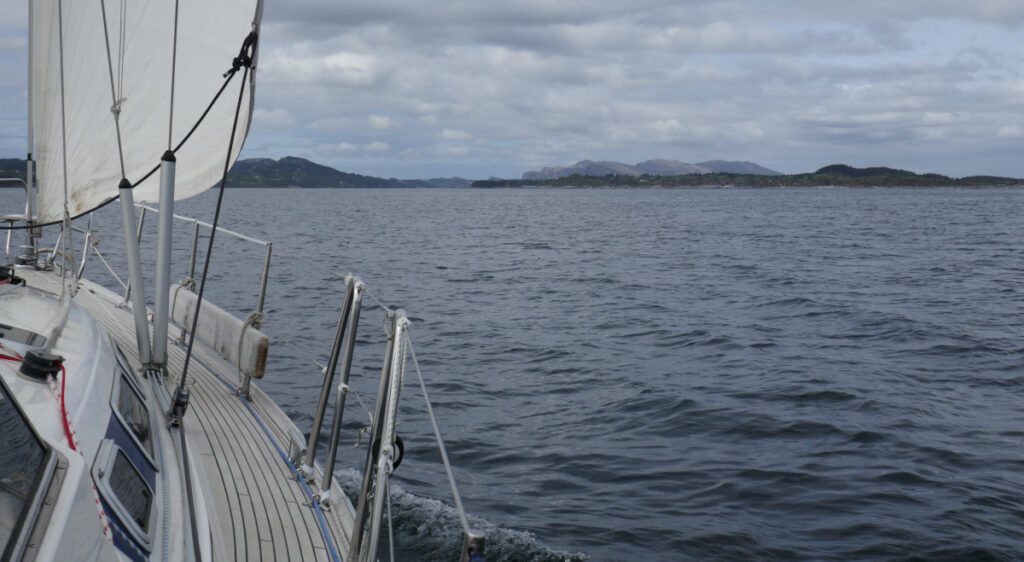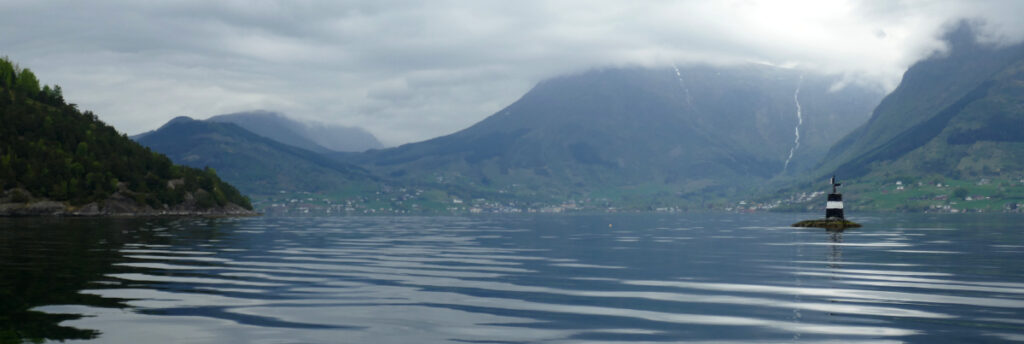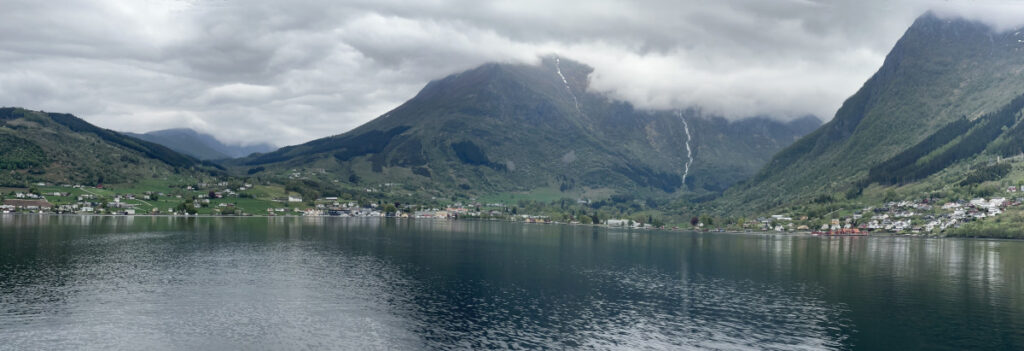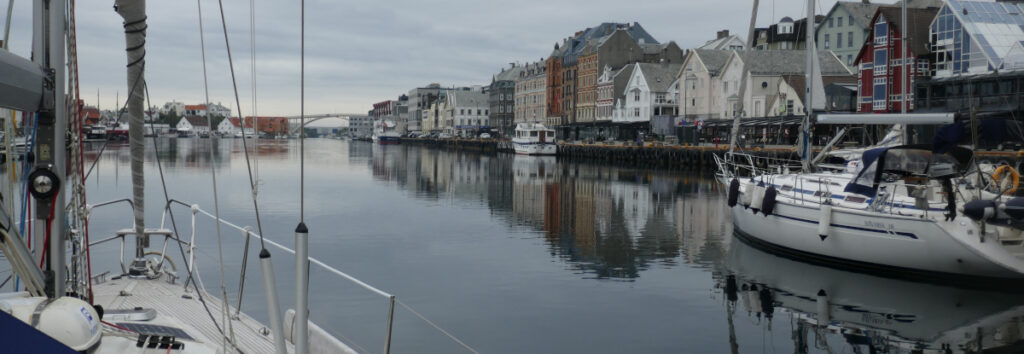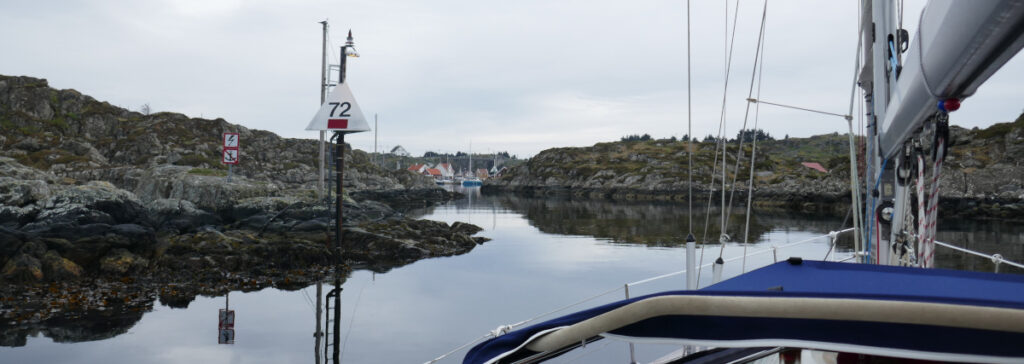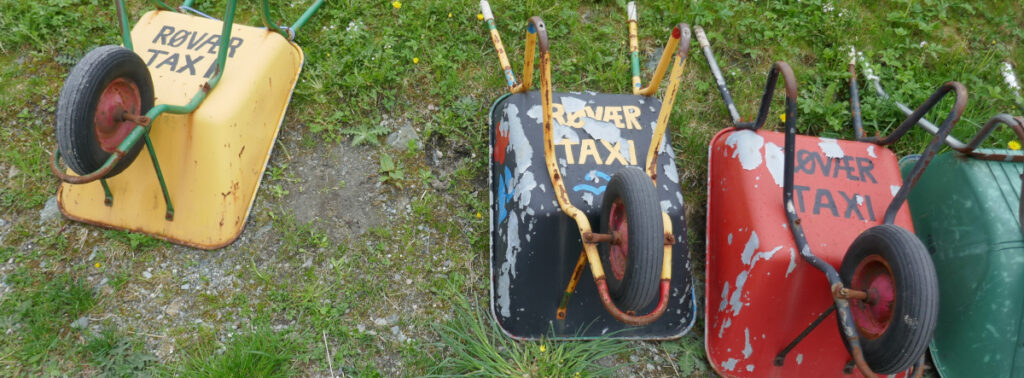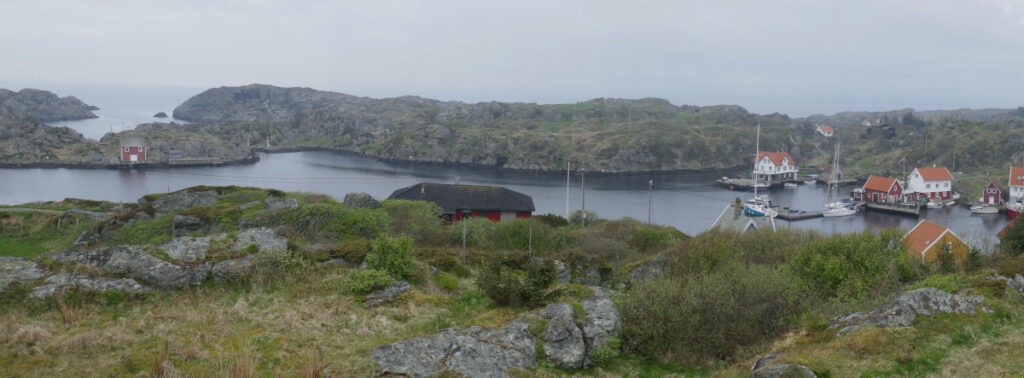Compared to Alesund, with its more than 50 000 inhabitants + tourist + cruise ships, the islands of Ona/Husoey with 15 permanent inhabitants is in our humble opinion, a smaller place.

We Passed under one of the many bridges connecting the islands. This one is fairly new. You can see the large “islands” filled around the pillars to prevent collision. If you look closely, you will also see the row of markers leading up to the bridge in a straight line.


Beautifull scenery along the way.

Ona lies in the Atlantic/Norwegian see as the last island in a chain running NW from Alesund. Next stop is Island. It consists of two connected islands: Ona and Husoey.

The harbour is quite small, and the ferry is built to fit, and for the shallow waters on its route along the islands to Ona.
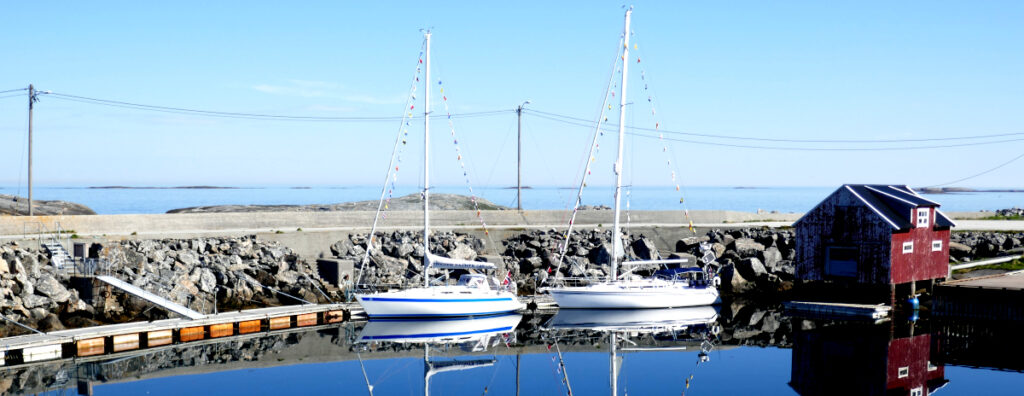
We stayed for the 17 May celebrations (constitution day). All the boats on the guest pontoon flow their flags in honour of the day.
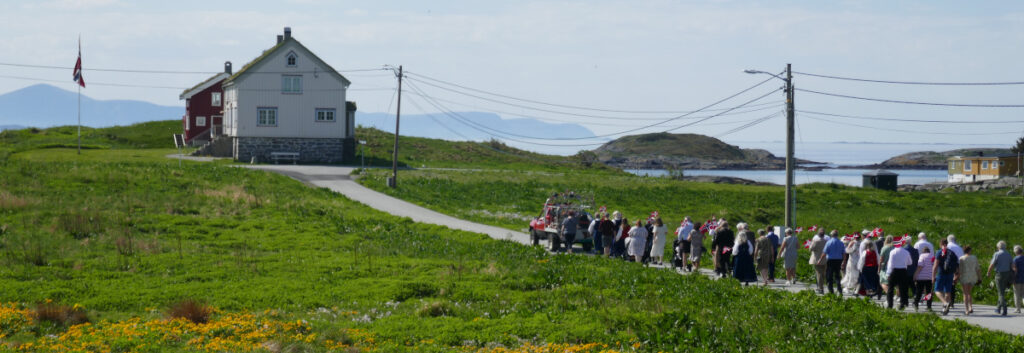
There was a parade across the islands as is the tradition. On this small island, the band was replaced with a fire truck with a speaker.

We were invited for lunch and bingo in the community hall. Very interesting to hear from the people who had grown up on the island about the old days. 50 years ago, there were 250 people living on the islands and a school.

After a short rest on board, the celebrations continued. Now with bubbles in the sunshine outside the local restaurant followed by more on the dock outside one of the converted boathouses.
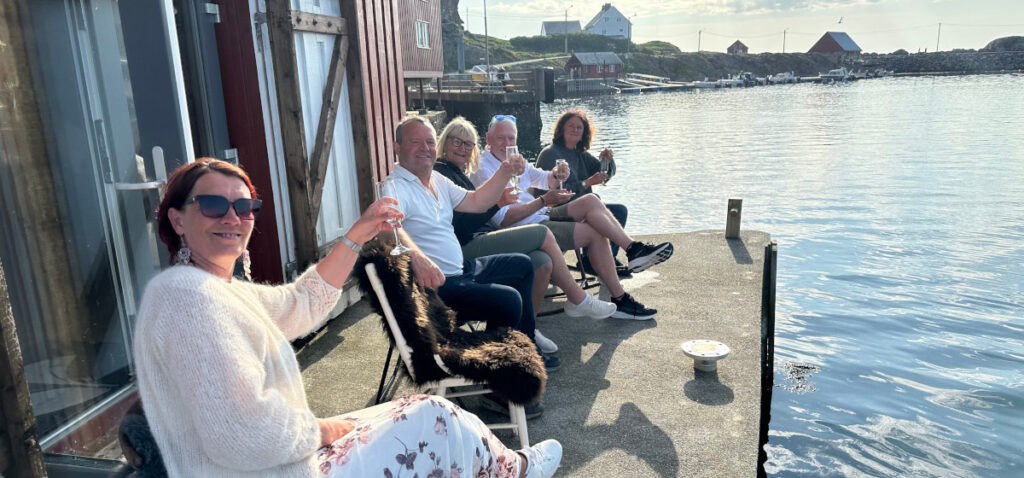
We were invited to bring up some fish-pots before leaving our newfound friends. The were just thrown in the water from the pier and came up filled with crabs that was presented to us. An appreciated gesture from a most hospitable couple.
The day ended with cooking the claws for next evening. The crabs have no food in their shells at this time of the year so one only eats the claws. It has the added advantage of requiring a much smaller pot to cook them.

The sun set in the sea after a long and very pleasant day.

